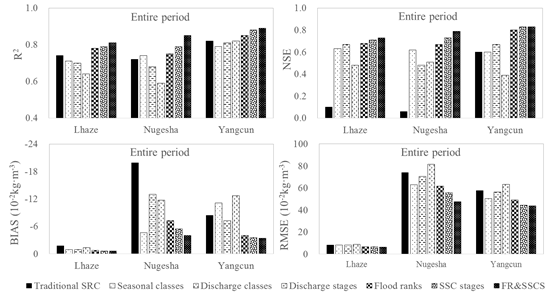Suspended sediment load of a river represents integrated results of soil erosion, landform change and ecosystem variation occurring within the river basin. Accurate estimation of suspended sediment load is helpful for distinguishing the impact of natural and anthropogenic factors.
The Yarlung Zangbo River (YZR), located on the northern slope of the Himalayan Mountains, experiences the most serious soil erosion problems on the Tibetan Plateau. Meanwhile, the middle reach of the basin includes one of the most fertile and populous agriculture regions in Tibet. Clarifying the sediment transport regime in the middle reach of the YZR is essential for watershed management and environmental protection. However, due to the unique climate, topography and landform features, the traditional SRC subdivision methods, e.g. seasonal and hydrological groupings, were not adequate and need to be improved while applied in the YZR basin.
Assistant Professor Chen Zeng, a member of Professor Fan Zhang’s team of the CAS center for excellence in Tibetan Plateau earth sciences, and the co-authors, proposed two new sediment rating curve subdivision methods based on flood ranks and suspended sediment concentration stages, assuming that availability of erodible sediment sources depends not only on the precipitation-driven erosive flow but also on the pre-conditions of soil. Compared to the traditional sediment rating curve, and seasonal, discharge classes and discharge stages subdivision methods, these newly proposed methods can improve suspended sediment concentration and subsequent suspended sediment load estimation in the middle reach of the Yarlung Zangbo River, and therefore are useful for water resource management of the river basin.
This paper gas been published in Catena with paper link: https://doi.org/10.1016/j.catena.2017.09.023 . Citation: Chen Zeng, Fan Zhang, Xixi Lu, Guanxing Wang, Tongliang Gong. Improving sediment load estimations: The case of the Yarlung Zangbo River (the upper Brahmaputra, Tibet Plateau). Catena, 2018, 160:201-211.

Fig.1. Comparison of the proposed subdivision methods with the traditional sediment rating curve and subdivision methods for suspended sediment load estimation for the entire period.

